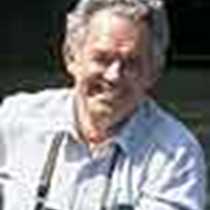The Drake Passage
Yesterday, we left Ushuaia and steamed eastward in the Beagle Channel. Ahead of us was the most feared body of water in the world. Its crossing raised both our anxiety and our anticipation. And our curiosity.
Today, we awoke to a gentle rolling motion, a motion so subtle that we weren’t sure we were in the Drake. But, in the Drake we were, and the early risers saw two species of giant albatrosses, the royal and the wandering, soaring effortlessly over our wake. Joining these 11-foot wingspan birds, were other albatross relatives; great and sooty shearwaters, pintado petrels, giant petrels and numerous black-browed albatrosses. These birds belong to the most oceanic group of birds in the world, the tubenoses, and are most at home at sea and on the wind.
Robert Cushman Murphy, the first Curator of Birds at the American Museum of Natural History in New York, established his ornithological reputation by arriving in the great Southern Ocean on the Daisy in 1912-13. His job was to collect specimens of seabirds. When he was off the coast of Argentina on his way south, he saw his first albatross and declared that, “I now belong to a higher cult of mortals, for I have seen the albatross.” As we saw our first albatrosses we too realized that something special had happened and we joined that fraternity of people who had images of albatrosses safely stored in their memories.
During the morning, our geologist, Harold Stowell, described how the mountains of the Andes continued onto the Antarctica Peninsula. Until 40 million years ago there was no Drake Passage. With the final breaching of that barrier the Drake Passage was formed, the continent of Antarctica cooled dramatically as the circumpolar winds and currents cut off heat from more northerly latitudes. Could it be that the very largest of the soaring birds, the royal and wandering albatrosses, evolved in the winds of the Roaring Forties, the Furious Fifties and the Screaming Sixties?
As we travel southward toward Elephant Island, our anticipation continued to soar buoyed by the images of the most magnificent soaring birds in the world. Our curiosity raised many questions. Some questions will have answers; others will continue to perplex us. In the end it may very well be that the quest is what really matters.
Yesterday, we left Ushuaia and steamed eastward in the Beagle Channel. Ahead of us was the most feared body of water in the world. Its crossing raised both our anxiety and our anticipation. And our curiosity.
Today, we awoke to a gentle rolling motion, a motion so subtle that we weren’t sure we were in the Drake. But, in the Drake we were, and the early risers saw two species of giant albatrosses, the royal and the wandering, soaring effortlessly over our wake. Joining these 11-foot wingspan birds, were other albatross relatives; great and sooty shearwaters, pintado petrels, giant petrels and numerous black-browed albatrosses. These birds belong to the most oceanic group of birds in the world, the tubenoses, and are most at home at sea and on the wind.
Robert Cushman Murphy, the first Curator of Birds at the American Museum of Natural History in New York, established his ornithological reputation by arriving in the great Southern Ocean on the Daisy in 1912-13. His job was to collect specimens of seabirds. When he was off the coast of Argentina on his way south, he saw his first albatross and declared that, “I now belong to a higher cult of mortals, for I have seen the albatross.” As we saw our first albatrosses we too realized that something special had happened and we joined that fraternity of people who had images of albatrosses safely stored in their memories.
During the morning, our geologist, Harold Stowell, described how the mountains of the Andes continued onto the Antarctica Peninsula. Until 40 million years ago there was no Drake Passage. With the final breaching of that barrier the Drake Passage was formed, the continent of Antarctica cooled dramatically as the circumpolar winds and currents cut off heat from more northerly latitudes. Could it be that the very largest of the soaring birds, the royal and wandering albatrosses, evolved in the winds of the Roaring Forties, the Furious Fifties and the Screaming Sixties?
As we travel southward toward Elephant Island, our anticipation continued to soar buoyed by the images of the most magnificent soaring birds in the world. Our curiosity raised many questions. Some questions will have answers; others will continue to perplex us. In the end it may very well be that the quest is what really matters.




